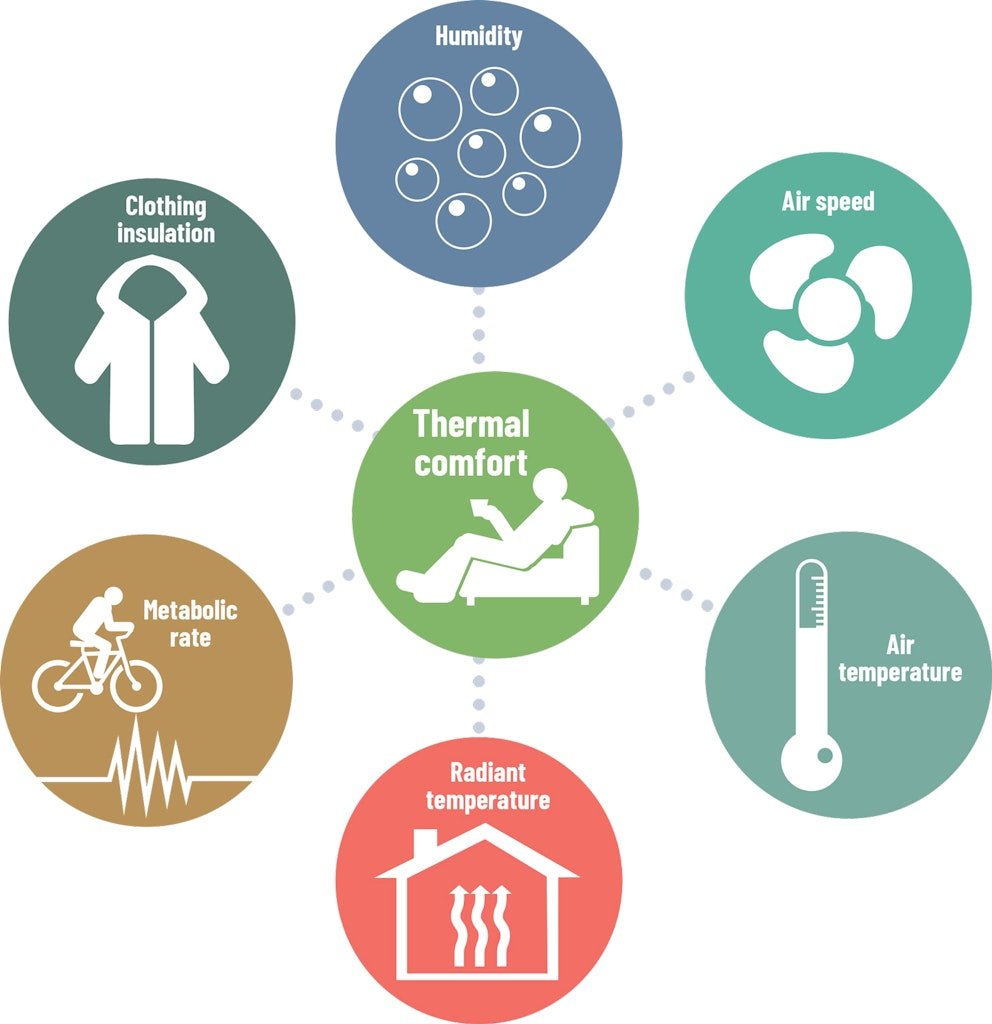
Beyond the Thermostat: Achieving Optimal Thermal Comfort with EDSS
In Singapore’s bustling environment, where humidity often lingers and temperatures fluctuate, achieving optimal thermal comfort isn’t just a luxury – it’s a necessity for productivity, well-being, and even energy efficiency. From data centers to warehouses, offices to hawker centers, maintaining a comfortable indoor climate can significantly impact human performance, health, and operational costs. This is where Testmeter.sg’s Environmental Detecting System Solution (EDSS) steps in, offering a comprehensive and intelligent approach to monitoring and managing thermal comfort.
Understanding Thermal Comfort: More Than Just Temperature
Before diving into EDSS, it’s crucial to understand what constitutes true thermal comfort. It’s not simply about setting a thermostat to a specific temperature. Instead, it’s a complex interplay of several environmental and personal factors that influence how individuals perceive their surroundings. These include:

- Air Temperature: The ambient air temperature is a primary factor, but its impact is modulated by other elements.
- Relative Humidity: High humidity can make even moderate temperatures feel stifling, hindering the body’s natural cooling process (evaporation of sweat).
- Air Speed: Gentle air movement can enhance comfort in warm conditions, while drafts can cause discomfort in cooler environments.
- Radiant Temperature: The temperature of surrounding surfaces (walls, floors, windows) can significantly affect perceived warmth or coolness.
- Metabolic Rate: The level of physical activity influences the body’s heat production.
- Clothing Insulation: The type and amount of clothing worn directly impact heat retention.
Ignoring any of these factors can lead to a thermally uncomfortable environment, resulting in complaints, reduced productivity, and potentially, health issues.
The EDSS Advantage: Precision Monitoring for Superior Thermal Comfort
Testmeter.sg’s EDSS system is designed to provide real-time, accurate data on the critical environmental parameters that define thermal comfort. Utilizing advanced IoT devices like the Kaiterra Smart Air Quality monitor, EDSS goes beyond basic temperature readings.
- Comprehensive Data Capture: EDSS sensors precisely measure air temperature, relative humidity, and in some configurations, even ambient light and potentially air speed (depending on sensor accessories). This multi-parameter approach provides a holistic view of the indoor environment, crucial for understanding thermal comfort.
- Real-time Insights and Alerts: The power of EDSS lies in its ability to transmit data in real-time to the UbiBot IoT cloud platform. This means you can monitor conditions remotely via a user-friendly app or web console. Crucially, EDSS allows for customized alert settings. If any parameter falls outside your predefined comfort range (e.g., humidity spikes, temperature drops), you receive instant notifications via app, email, SMS, or even voice call. This proactive approach allows for immediate intervention, preventing discomfort before it escalates.
- Data Logging and Analysis: EDSS devices store a vast amount of historical data, even if network connectivity is temporarily lost. This continuous data logging is invaluable for long-term analysis. By reviewing trends in temperature, humidity, and other factors, facility managers can identify persistent issues, optimize HVAC system performance, and make informed decisions to improve thermal comfort over time.
- Scalability and Flexibility: Whether you’re monitoring a small data center, a large warehouse, or multiple office spaces, EDSS offers scalable solutions. With various UbiBot models and optional external probes, the system can be tailored to meet the specific monitoring needs of diverse indoor environments.
- Simplified Deployment: Designed for ease of use, EDSS systems typically boast a quick and straightforward setup, often within minutes. This minimizes disruption and allows for rapid implementation of effective thermal comfort monitoring.
The Impact of Optimized Thermal Comfort
Investing in EDSS for thermal comfort monitoring offers a multitude of benefits:
- Enhanced Productivity: Comfortable occupants are more focused, engaged, and productive. In offices, this translates to better work output. In educational settings, it means improved learning.
- Improved Health and Well-being: Maintaining optimal thermal comfort reduces the risk of heat stress, cold stress, and other discomfort-related health issues. It contributes to a healthier and more enjoyable indoor environment.
- Reduced Energy Consumption: By precisely monitoring conditions and identifying areas of inefficiency, EDSS helps optimize HVAC operations. This can lead to significant energy savings by preventing overcooling or overheating.
- Proactive Problem Solving: Real-time alerts enable swift action against environmental deviations, minimizing potential damage to sensitive equipment (e.g., in data centers) or discomfort for occupants.
- Compliance with Standards: For many industries, adhering to specific thermal comfort standards (like ASHRAE Standard 55) is crucial. EDSS provides the data necessary to demonstrate compliance.
Testmeter.sg: Your Partner in Thermal Comfort
At Testmeter.sg, we understand the critical role thermal comfort plays in various settings. Our EDSS solutions, powered by reliable Kaiterra technology, offer a powerful and accessible way to achieve and maintain ideal indoor conditions. By providing precise monitoring, real-time alerts, and comprehensive data analysis, EDSS empowers businesses and organizations to create environments that are not just habitable, but truly comfortable, productive, and energy-efficient. Explore our range of EDSS solutions today and experience the difference that intelligent thermal comfort management can make.
